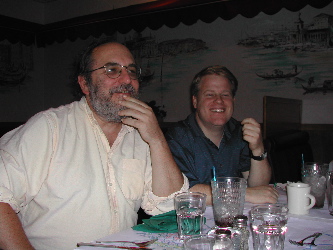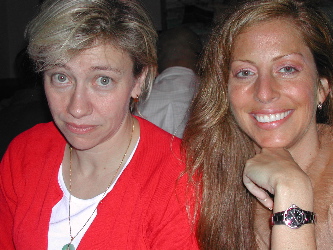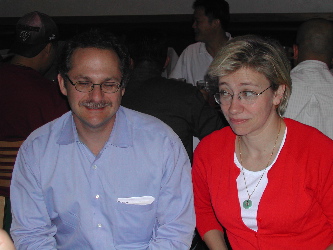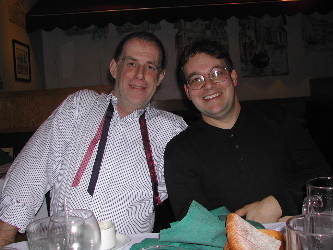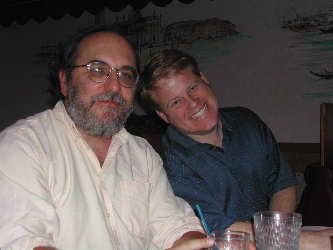with:
Larry Downes, Unleashing the Killer App: Digital Strategies for Market Dominance and The Strategy Machine: Building Your Business One Idea at a Time,
Jeff Cohen, CIO, JetBlue,
Tony Scott, CTO, General Motors,
George Rimnac, W.W. Grainger
Opening remarks from Larry Downes. IT as a competitive weapon for companies. Foolish to eliminate IT spending, but companies should try to zero out the IT budget by combining it with R&D. No reason to treat these distinctly, since there are too many interrelations. Concluding with three things to carry forward: open standards; object oriented architectures and techniques; and absolute separation of process, data and interface.
George: our customer is a facilities maintenance management person, focus is closing the last five feet, concerning the products and services they need to solve maintenance problems. "Carry-on luggage" sized product catalog and specs made available for them in digital form.
Jeff: customer surveys revealed the most important thing to the flying public -- over price and everything else -- was live TV. They took this to heart. They are the only airline with a fully paperless cockpit, the pilots all have laptops.
Tony: importance of automating tasks you perform in the car, not to plug OnStar, but let's talk about it. Much to talk about regarding technology in cars.
George: Grainger Auction was an interesting experience; it worked too well, conflicted with their brand image and the overall aims of the company.
Tony: GM also tried auctioning inventory on the Web, mushroomed out of control so fast they had to rebuild it a couple of times as it scaled up. This was a case where something took off like crazy. GM was excited about cost savings, but it also revealed and filled a need for the dealers to have the right inventory of the lots when needed.
Jeff: re .NET and our development process, we do much development internally. JetBlue does 65% of its business from its Web site. Its frequent flyer program was developed with .NET. They're careful about bringing Web apps to market because a user's first experience is a memorable one, and they want it to be the right one.
George: If it would appear natural to a customer that you should be able to do it in a particular channel (Web, telephone), you'd better be able to do it in that channel.
Q&A:
Question for Tony re customization. Most of the major things tend to have cross-brand recognition. OnStar, XM Radio. The value is greater than what would appear in any one brand.
Question for panel re notion of zeroing out the IT budget, is it really R&D. Tony says for GM it's tough to tell what is IT and knowledge infrastructure and what is product. Separation becomes harder and more arbitrary. GM is focused on taking cost out of their IT environment, but not at the expense of new development. They see the fruits of this every day. George says they're actually doing this already. Development and experimentation budgets not impacted, driving dollars out of operations and into development is helpful for them. Jeff has 27% of his budget devoted to R&D, and seven heads in charge of new development. It wouldn't matter to him to combine the IT and R&D budgets, makes sense.
Question about whether these Cos will purchase technology from startups. GM is so massive. Who are you partnered with? They use a risk management approach: what's the worst thing that will happen if this fails? Some divisions have very low absorbtion for new tech -- "they just pull out the guns and shoot you." Others are way out ahead. JetBlue has much more flexibility to work with startups.
[Couple questions I missed; saving up for a promised entertaining closing session with Gary Loveman of Harrah's...]
 Saturday, October 5, 2002 at 10:38AM
Saturday, October 5, 2002 at 10:38AM 
